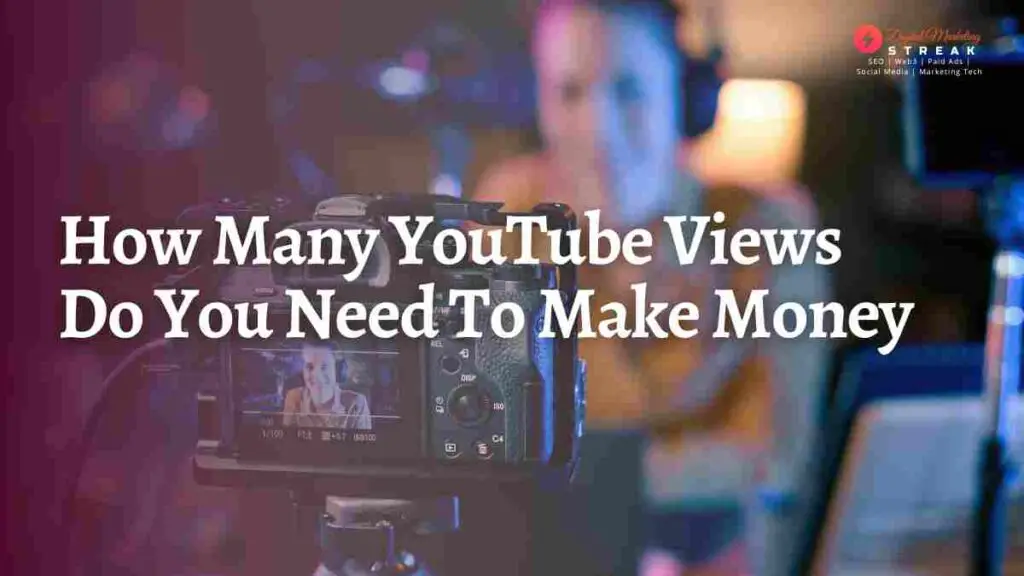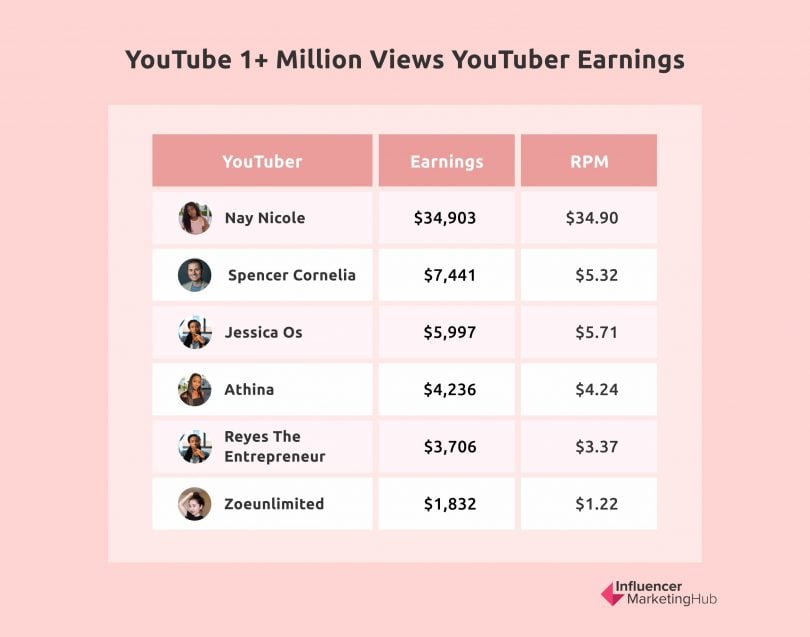Understanding YouTube’s Partner Program: The Key to Monetizing Your Channel
YouTube’s Partner Program (YPP) is the gateway to monetizing your channel and earning money from your views. To be eligible for the YPP, creators must meet YouTube’s requirements, which include having at least 1,000 subscribers and 4,000 watch hours in the past 12 months. Once accepted into the program, creators can start earning money from ads displayed on their videos.
The types of ads displayed on YouTube videos include display ads, overlay ads, and video ads. Display ads appear as banners or images on the video player, while overlay ads are semi-transparent and appear on top of the video content. Video ads, on the other hand, are played before, during, or after the video content. Creators can earn money from these ads through the AdSense program, which pays creators based on the number of views and clicks on the ads.
However, the amount of money creators can earn from 10,000 views on YouTube varies greatly depending on several factors, including the niche or topic of the video, engagement levels, and audience demographics. For example, a video about a popular topic like gaming or beauty may earn more money from ads than a video about a niche topic like woodworking or cooking. Additionally, videos with high engagement levels, such as likes, comments, and shares, may also earn more money from ads.
YouTube’s algorithm also plays a significant role in determining ad revenue. The algorithm takes into account various factors, such as view count, engagement, and audience retention, to determine which ads to display on a video and how much to pay the creator. Creators can optimize their videos for ad revenue by using keywords, tags, and descriptions that accurately reflect the content of the video.
While the exact amount of money creators can earn from 10,000 views on YouTube is difficult to determine, it’s estimated that creators can earn between $10 to $50 per 1,000 views, depending on the niche and engagement levels. However, this amount can vary greatly depending on the specific circumstances of the video and the creator’s audience.
How YouTube Calculates Ad Revenue: A Deep Dive into the Algorithm
YouTube’s algorithm for calculating ad revenue is a complex system that takes into account various factors to determine how much money creators can earn from their views. One of the primary factors is view count, which is the number of times a video is watched. However, view count alone is not enough to determine ad revenue. Other factors such as engagement, niche, audience demographics, and ad click-through rates also play a significant role.
Engagement, which includes likes, comments, and shares, is an important factor in determining ad revenue. Videos with high engagement levels tend to earn more money from ads because they are more likely to be relevant and interesting to viewers. Niche is also a crucial factor, as videos about popular topics like gaming or beauty tend to earn more money from ads than videos about niche topics like woodworking or cooking.
Audience demographics, such as age, location, and interests, also influence ad revenue. Advertisers are willing to
The Role of View Count in YouTube’s Monetization Formula
View count is a crucial factor in determining ad revenue on YouTube. While it’s not the only factor, it plays a significant role in calculating earnings. So, how much money can you expect to earn from 10,000 views on YouTube? The answer depends on various factors, including niche, engagement, and ad placement.
In general, videos with high view counts tend to earn more money from ads. However, the earnings per view (EPV) vary greatly depending on the niche. For example, a video about a popular topic like gaming or beauty may earn more money from ads than a video about a niche topic like woodworking or cooking.
Engagement also plays a significant role in determining ad revenue. Videos with high engagement levels, such as likes, comments, and shares, tend to earn more money from ads. This is because engaged viewers are more likely to watch the video until the end, increasing the chances of them seeing and clicking on ads.
Ad placement is another factor that affects earnings. Videos with ads placed at the beginning or middle of the video tend to earn more money than videos with ads placed at the end. This is because viewers are more likely to watch the ads at the beginning or middle of the video, increasing the chances of them clicking on the ads.
So, how much money can you expect to earn from 10,000 views on YouTube? Based on the factors mentioned above, here are some rough estimates:
* For a video about a popular topic like gaming or beauty, with high engagement levels and ads placed at the beginning or middle of the video, you can expect to earn around $50 to $100 from 10,000 views.
* For a video about a niche topic like woodworking or cooking, with low engagement levels and ads placed at the end of the video, you can expect to earn around $10 to $20 from 10,000 views.
Keep in mind that these are rough estimates and actual earnings may vary greatly depending on various factors, including the specific niche, engagement levels, and ad placement.
Estimating Earnings from 10,000 Views: A Realistic Breakdown
Estimating earnings from 10,000 views on YouTube can be a complex task, as it depends on various factors such as niche, ad placement, and engagement levels. However, based on industry benchmarks and real-life examples, we can provide a realistic breakdown of estimated earnings from 10,000 views on YouTube.
For a video in the gaming niche, with high engagement levels and ads placed at the beginning or middle of the video, estimated earnings from 10,000 views could be around $50 to $100. This is because gaming videos tend to have high engagement levels and are often monetized with high-paying ads.
For a video in the beauty niche, with moderate engagement levels and ads placed at the end of the video, estimated earnings from 10,000 views could be around $20 to $50. This is because beauty videos tend to have moderate engagement levels and are often monetized with lower-paying ads.
For a video in the cooking niche, with low engagement levels and ads placed at the end of the video, estimated earnings from 10,000 views could be around $10 to $20. This is because cooking videos tend to have low engagement levels and are often monetized with lower-paying ads.
It’s worth noting that these estimates are based on industry benchmarks and may vary depending on various factors, such as the specific niche, engagement levels, and ad placement. Additionally, these estimates do not take into account other revenue streams, such as sponsorships, merchandise sales, or affiliate marketing.
To give you a better idea of how much money you can earn from 10,000 views on YouTube, let’s take a look at some real-life examples. For instance, a popular gaming channel with 10,000 views per video can earn around $500 to $1,000 per month from ads alone. A beauty channel with 10,000 views per video can earn around $200 to $500 per month from ads alone.
Keep in mind that these are just estimates and actual earnings may vary greatly depending on various factors. However, by understanding the factors that influence ad revenue and using industry benchmarks, you can get a realistic idea of how much money you can earn from 10,000 views on YouTube.
Maximizing Earnings from Your YouTube Views: Tips and Strategies
Now that we’ve discussed the basics of YouTube’s Partner Program and how to estimate earnings from 10,000 views, let’s dive into some actionable tips and strategies to help you maximize your earnings from YouTube views.
Optimizing your video titles, descriptions, and tags is crucial to increasing your earnings from YouTube views. By using relevant keywords and phrases, you can improve your video’s visibility in search results and attract more views. Additionally, make sure to include a clear and concise description of your video, including any relevant links or calls-to-action.
Using eye-catching thumbnails is another effective way to increase your earnings from YouTube views. Your thumbnail should be visually appealing and accurately represent the content of your video. Avoid using misleading or clickbait-style thumbnails, as they can harm your credibility and lead to a decrease in views.
Leveraging social media promotion is also a great way to increase your earnings from YouTube views. By sharing your videos on platforms like Facebook, Twitter, and Instagram, you can reach a wider audience and drive more traffic to your YouTube channel. Make sure to include a link to your YouTube channel in your social media profiles and engage with your followers by responding to comments and messages.
Another effective way to increase your earnings from YouTube views is to create high-quality, engaging content that resonates with your audience. By creating content that is informative, entertaining, or inspiring, you can increase your viewership and engagement, leading to more earnings from YouTube views.
Finally, make sure to comply with YouTube’s monetization policies and guidelines to avoid any penalties or restrictions on your account. By following these tips and strategies, you can maximize your earnings from YouTube views and achieve long-term success on the platform.
Some popular tools and software that can help you maximize your earnings from YouTube views include:
* TubeBuddy: A browser extension that provides tools and features to help you optimize your YouTube videos and increase your earnings.
* VidIQ: A tool that provides insights and analytics to help you optimize your YouTube videos and increase your earnings.
* Hootsuite: A social media management tool that allows you to schedule and post content across multiple platforms, including YouTube.
By using these tools and following the tips and strategies outlined in this article, you can maximize your earnings from YouTube views and achieve long-term success on the platform.
YouTube’s Monetization Policies: Understanding the Rules and Regulations
YouTube’s monetization policies are in place to ensure that creators comply with the platform’s rules and regulations. Understanding these policies is crucial to avoid any penalties or restrictions on your account.
One of the most important policies to understand is the guidelines for ad placement. YouTube requires that ads be placed in a way that is not misleading or deceptive to viewers. This means that ads should not be placed in a way that makes it difficult for viewers to distinguish between the ad and the content.
Another important policy to understand is the content restrictions policy. YouTube prohibits certain types of content, such as hate speech, harassment, and explicit material. Creators who violate this policy may have their videos removed or their account suspended.
Copyright infringement is also a serious issue on YouTube. Creators who use copyrighted material without permission may have their videos removed or their account suspended. It’s essential to understand the rules and regulations surrounding copyright infringement and to always obtain permission before using copyrighted material.
The consequences of violating YouTube’s monetization policies can be severe. Creators who violate these policies may have their videos removed, their account suspended, or even terminated. In addition, creators who violate these policies may also face financial penalties, such as having their earnings withheld.
It’s essential to understand YouTube’s monetization policies and to comply with them to avoid any penalties or restrictions on your account. By following these policies, creators can ensure that their content is compliant and that they can continue to monetize their videos on the platform.
Some of the key policies to understand include:
* The YouTube Partner Program (YPP) terms and conditions
* The YouTube community guidelines
* The YouTube copyright policy
* The YouTube ad placement policy
By understanding these policies and complying with them, creators can ensure that their content is compliant and that they can continue to monetize their videos on the platform.
Tracking Your YouTube Earnings: A Guide to Analytics and Reporting
Tracking your YouTube earnings is crucial to understanding how much money you can make from your views. YouTube provides a range of analytics tools to help creators track their earnings, including YouTube Studio and Google Analytics.
YouTube Studio is a free analytics tool that provides creators with insights into their earnings, views, and engagement. With YouTube Studio, creators can track their earnings in real-time, view their earnings history, and access detailed reports on their earnings.
Google Analytics is another powerful tool that can help creators track their earnings. With Google Analytics, creators can track their website traffic, engagement, and conversion rates, as well as their earnings from YouTube.
Monitoring your earnings is essential to adjusting your strategies and maximizing your earnings. By tracking your earnings, you can identify areas for improvement, such as optimizing your video titles, descriptions, and tags, using eye-catching thumbnails, and leveraging social media promotion.
Some key metrics to track when monitoring your earnings include:
* Earnings per 1,000 views (EPM)
* Earnings per click (EPC)
* Click-through rate (CTR)
* Conversion rate
By tracking these metrics, creators can gain a deeper understanding of their earnings and make data-driven decisions to maximize their earnings.
In addition to tracking your earnings, it’s also essential to stay up-to-date with YouTube’s monetization policies and guidelines. By complying with these policies, creators can ensure that their content is compliant and that they can continue to monetize their videos on the platform.
Some popular tools and software that can help creators track their earnings include:
* YouTube Studio
* Google Analytics
* TubeBuddy
* VidIQ
By using these tools and tracking your earnings, creators can gain a deeper understanding of their earnings and make data-driven decisions to maximize their earnings.
Conclusion: Turning Your YouTube Views into a Sustainable Income Stream
In conclusion, understanding YouTube’s monetization formula and maximizing earnings from your views requires a combination of creativity, strategy, and compliance with policies. By following the tips and strategies outlined in this article, creators can increase their earnings from YouTube views and turn their channel into a sustainable income stream.
Remember, the key to success on YouTube is to create high-quality, engaging content that resonates with your audience. By optimizing your video titles, descriptions, and tags, using eye-catching thumbnails, and leveraging social media promotion, you can increase your views and earnings.
Additionally, understanding YouTube’s monetization policies and guidelines is crucial to avoiding penalties and restrictions on your account. By complying with these policies, creators can ensure that their content is compliant and that they can continue to monetize their videos on the platform.
Finally, tracking your YouTube earnings using analytics tools, such as YouTube Studio or Google Analytics, is essential to monitoring your earnings and adjusting your strategies accordingly. By using these tools, creators can gain a deeper understanding of their earnings and make data-driven decisions to maximize their earnings.
By following these tips and strategies, creators can turn their YouTube views into a sustainable income stream and achieve long-term success on the platform. So, start experimenting and adapting your strategies today, and watch your earnings grow!
And remember, the answer to the question “how much money for 10000 views on YouTube” is not a simple one. It depends on various factors, such as niche, engagement, and ad placement. However, by understanding YouTube’s monetization formula and maximizing earnings from your views, you can increase your chances of success on the platform.








